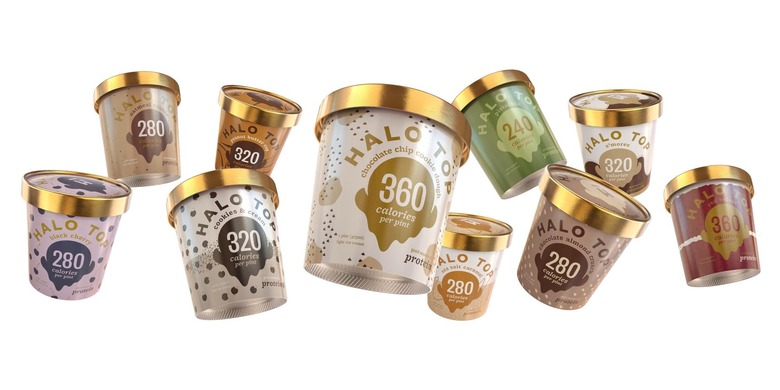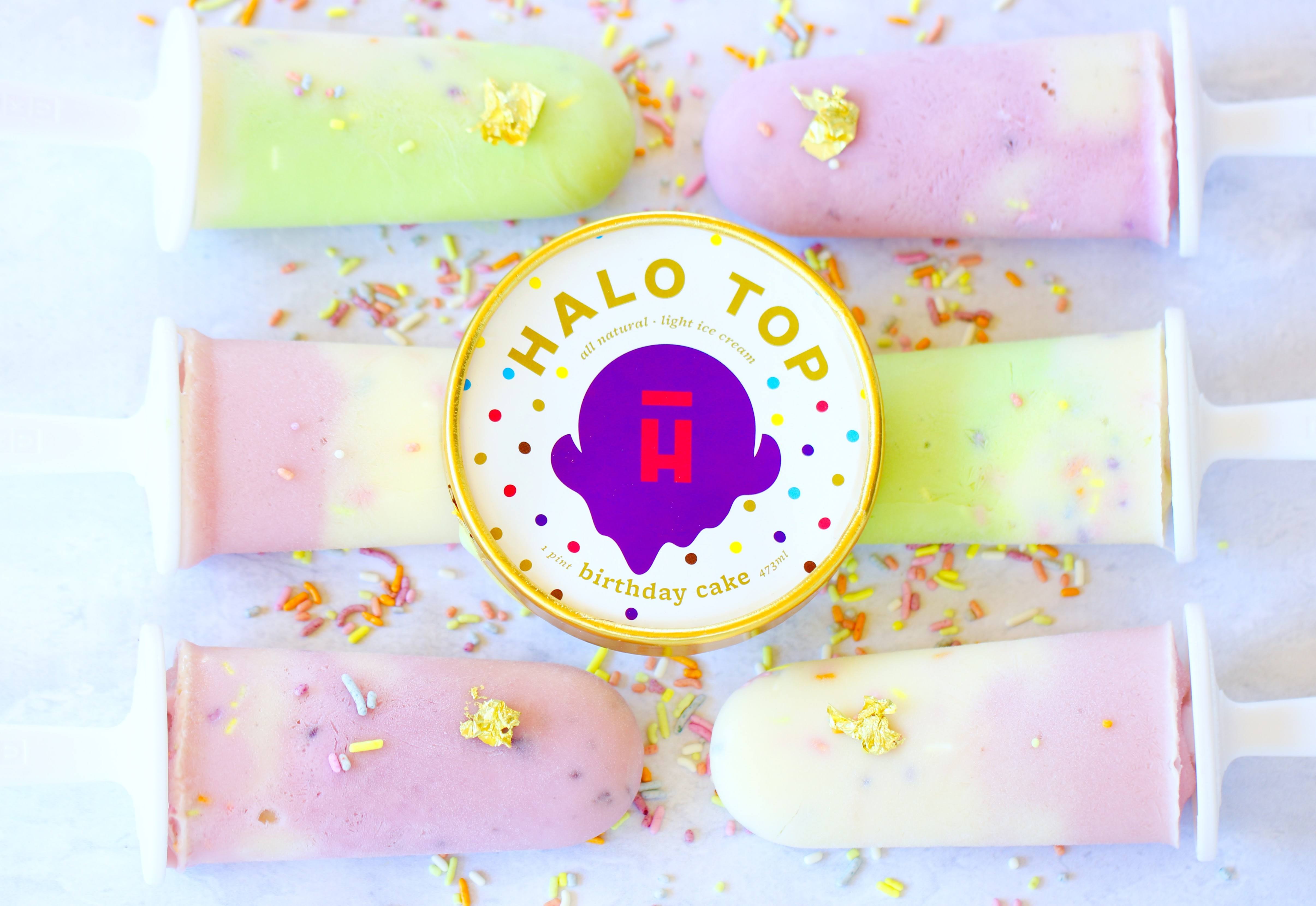Is This 'Diet' Ice Cream Too Good To Be True?
Been to Whole Foods or CVS lately? If so, you may have been drawn in to the freezer aisle after noticing a particularly appealing-looking pint. "280 calories," the container boasts. Um, what? So theoretically, you could consume an entire pint of creamy ice cream while taking in fewer calories than a bowl of cereal? Yes, that's right.
Food-lovers, fitness freaks, moms, and Weight-Watchers fanatics have all stumbled upon this dessert-enabling haven in the freezer aisle. As Halo Top's website explains, the creamy confection is "low-calorie, high-protein, and low-sugar." What's more, they offer a huge variety of flavors ranging from Sea Salt Caramel and Mint Chip to Red Velvet and Pistachio. Too good to be true?
Some think so. On an online comments board, one skeptic insists, "It tastes exactly like what it is: diet ice cream. I don't get why people are going crazy over this stuff." Sensory panelists for Consumer Reports thought Halo Top "had a chalky texture and lacked the fullness of regular ice cream."
However, some ice cream eaters love it, chalky texture and all. One college student even went so far as to eat only Halo Top for an entire week. PopSugar conducted a blind taste test and reported, "There was a whole lot of 'Love!' and 'Delicious!' and 'Yummy!' in our taste test notes."
Here at The Daily Meal, we are just as divided.
Our editor-in-chief, Susan Houriet, was underwhelmed with the taste. "I had heard great things about Halo Top at Weight Watchers, but I just couldn't get over the aftertaste of the sweetener they use." While she reported being able to taste a bitter residue of artificial sweetness in the dessert, I disagree — I love it, and can't taste a bitter aftertaste. It's truly my dessert dream come true.
Nutritionist and health coach Cara Scinto, MS, believes the "now I can eat as much ice cream as I want!" mindset that comes with the low-calorie label isn't helpful. "Yes, they're lower in sugar, which gives some folks the idea eating a full pint is okay. Which, to be totally honest, I think isn't the greatest health-wise." When we asked her why not, she responded, "First off, the sugar alcohols that are added in place of real sugar can lead to stomach problems like a belly ache."
"Plus," she pointed out, "eating too much of a good thing isn't mindful eating."
In summary, the pint of Halo Top has the potential for other adverse health effects, regardless of its low calorie count — especially when it comes to mental health. Despite being calorically equivalent to only a few bites of Ben and Jerry's, eating a pint of ice cream is still eating a pint of ice cream. That kind of eating isn't exactly considered "moderation."
But what about the nutritional value? Is the healthy-looking label too good to be true? We've gone through Halo Top's nutritional information so that you don't have to decipher the label through all the "buy me!" marketing.
The truth is, Halo Top isn't ice cream — it's artificially sweetened, contains a lot less fat, and slashes sugar from its ingredient list. How does Halo Top get so sweet? Stevia. That's the simple answer. Stevia is a sweetener deemed "natural" by health experts because it's been extracted from the stevia plant, Stevia rebaudiana. It's actually 200-300 times sweeter than regular sugar — which explains why Halo Top's ice cream is so incredibly sweet.
The company has been a bit quieter about their use of erythritol — a sugar alcohol that isn't metabolized by the body during digestion, resulting in zero calories and zero blood sugar spikes. However, the compound creates a bit of a controversy: While it's been ambiguously deemed "generally safe" by the Food and Drug Administration, it has been known to cause some adverse side effects in consumers. Some have experienced headaches, diarrhea, and other digestion issues after eating foods high in erythritol. There hasn't been a great deal of additional research done on the compound, so you'll have to be the judge!
Why does Halo Top taste so creamy? Cream. They use real cream. This factor — the dairy — is what distinguishes Halo Top from its diet ice cream competitors, like Arctic Zero. (Fear not, healthy readers — the cream in Halo Top is diluted with milk to keep the fat content nice and low.)
How is it nutritionally? Truth be told, the nutritional data can't be beat. For a frozen treat to have only 60 calories and only 5 grams of sugar per serving is pretty incredible. The protein content is nothing particularly unusual, however — real ice cream has just as much protein as this diet creation, averaging about 4 grams per half cup, so for Halo Top to hail itself as "high-protein ice cream" is a bit misleading.
Click here for an amazing Halo Top Ice Cream Taco Recipe.

